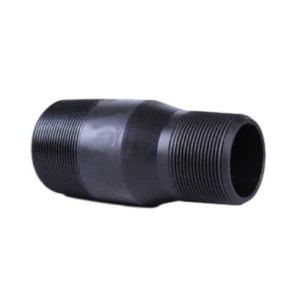- Afrikaans
- Albanian
- Amharic
- Arabic
- Armenian
- Azerbaijani
- Basque
- Belarusian
- Bengali
- Bosnian
- Bulgarian
- Catalan
- Cebuano
- Corsican
- Croatian
- Czech
- Danish
- Dutch
- English
- Esperanto
- Estonian
- Finnish
- French
- Frisian
- Galician
- Georgian
- German
- Greek
- Gujarati
- Haitian Creole
- hausa
- hawaiian
- Hebrew
- Hindi
- Miao
- Hungarian
- Icelandic
- igbo
- Indonesian
- irish
- Italian
- Japanese
- Javanese
- Kannada
- kazakh
- Khmer
- Rwandese
- Korean
- Kurdish
- Kyrgyz
- Lao
- Latin
- Latvian
- Lithuanian
- Luxembourgish
- Macedonian
- Malgashi
- Malay
- Malayalam
- Maltese
- Maori
- Marathi
- Mongolian
- Myanmar
- Nepali
- Norwegian
- Norwegian
- Occitan
- Pashto
- Persian
- Polish
- Portuguese
- Punjabi
- Romanian
- Russian
- Samoan
- Scottish Gaelic
- Serbian
- Sesotho
- Shona
- Sindhi
- Sinhala
- Slovak
- Slovenian
- Somali
- Spanish
- Sundanese
- Swahili
- Swedish
- Tagalog
- Tajik
- Tamil
- Tatar
- Telugu
- Thai
- Turkish
- Turkmen
- Ukrainian
- Urdu
- Uighur
- Uzbek
- Vietnamese
- Welsh
- Bantu
- Yiddish
- Yoruba
- Zulu
Understanding Bull Plug Pressure Ratings for Safe Operations and Equipment Integrity
Understanding Bull Plug Pressure Ratings Key Considerations for Safety and Efficiency
When it comes to industrial applications, especially in the fields of oil and gas, water management, and chemical processing, the integrity of connection points is paramount. One such critical component is the bull plug, often employed in various systems to ensure the proper functioning of pipelines by sealing unused ports and providing pressure containment. Understanding the pressure ratings assigned to bull plugs is essential for professionals to ensure safety, efficiency, and compliance with industry standards.
A bull plug, generally made from durable materials such as steel or high-grade plastics, serves as a barrier against leaks and external contaminants. The pressure rating of a bull plug is an indication of the maximum pressure it can safely withstand without risking failure. This rating is crucial because failure to adhere to these limits can lead to catastrophic outcomes—ranging from minor leaks to significant blowouts, which may result in costly downtime, environmental damage, or even threats to human safety.
Pressure ratings are typically expressed in pounds per square inch (PSI) or bar. For instance, a bull plug rated for 150 PSI can handle pressures up to that limit without deforming or leaking. When selecting bull plugs, manufacturers and engineers must consider not only the operating pressure of the system but also the potential for pressure surges, temperature variations, and the physical or chemical characteristics of the fluids being contained.
Another important aspect is the temperature rating, which collaborates with the pressure rating to form a complete picture of a component's suitability for a given application. High temperatures can weaken materials, leading to premature failure, even if the pressure is within acceptable limits. Materials used in manufacturing bull plugs, such as stainless steel or PEEK (polyether ether ketone), are selected based on their ability to maintain structural integrity under the expected operational temperatures.
bull plug pressure rating

In addition to material strength, other factors can affect pressure ratings. For example, thread quality and design can impact a bull plug’s ability to seal effectively. A good seal is crucial as it prevents the escape of gases or liquids that might be under pressure. Thus, both the design of the plug and the precision of its fit in the corresponding port must be considered.
Moreover, regulatory standards, such as those set by the American Society of Mechanical Engineers (ASME) or the American Petroleum Institute (API), provide guidelines regarding the pressure ratings of various components. Compliance with these standards not only ensures safety and reliability but also enhances the credibility of the manufacturer. Professionals in the field should always reference these standards when selecting bull plugs for their specific applications.
Finally, regular maintenance and inspection of bull plugs are vital in operational environments. Over time, wear and tear, exposure to corrosive elements, or mechanical stresses can compromise the integrity of bull plugs. Establishing a schedule for routine inspections can help identify potential issues before they escalate into serious failures.
In summary, the pressure rating of bull plugs is a crucial factor in their application within various industrial systems. Understanding these ratings, along with the materials and designs that impact their performance, is essential for professionals aiming to maintain safety, efficiency, and compliance. With rigorous adherence to standards and regular maintenance, organizations can minimize risks and ensure the reliable operation of their fluid transfer systems. The right choice of bull plugs can make all the difference in achieving operational excellence and preventing costly mishaps in high-pressure environments.
-
Tubing Pup Joints: Essential Components for Oil and Gas OperationsNewsJul.10,2025
-
Pup Joints: Essential Components for Reliable Drilling OperationsNewsJul.10,2025
-
Pipe Couplings: Connecting Your World EfficientlyNewsJul.10,2025
-
Mastering Oilfield Operations with Quality Tubing and CasingNewsJul.10,2025
-
High-Quality Casing Couplings for Every NeedNewsJul.10,2025
-
Boost Your Drilling Efficiency with Premium Crossover Tools & Seating NipplesNewsJul.10,2025







